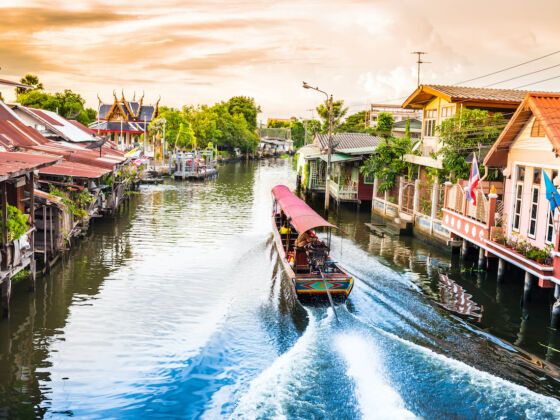Bangkok is a sprawling metropolis with many diverse districts; the joy of visiting the Thai capital lies in this medley. From the old city neighborhoods of Thonburi and Rattanakosin — packed with ornate temples, tree-lined canals, and wooden shophouses — to the modern districts of Silom and Sukhumvit — full of shiny skyscrapers and enormous shopping malls — here are the neighborhoods of the Thai capital that travelers should not miss.
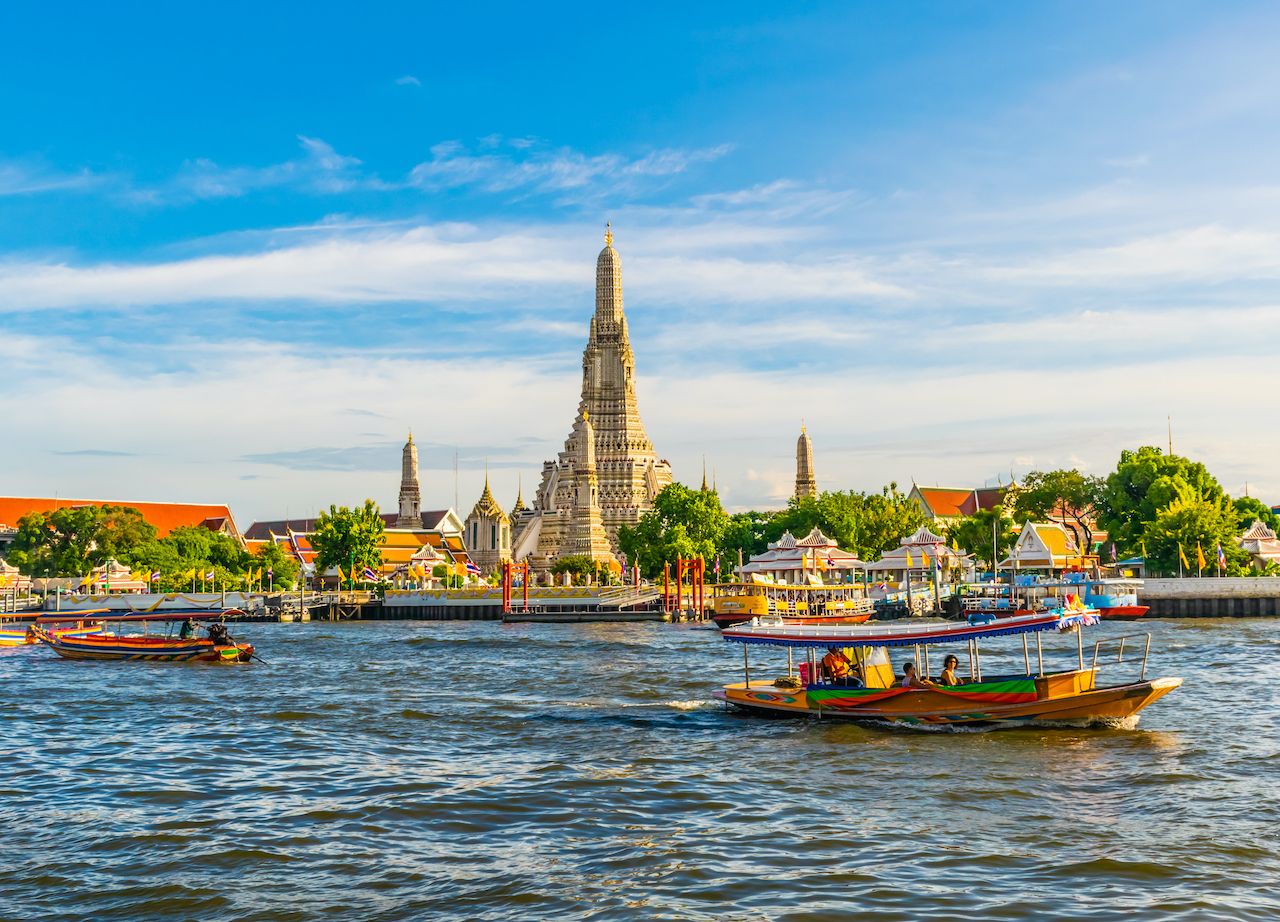
Photo: Camera_Bravo/Shutterstock
Rattanakosin Island — Rattanakosin Island is Bangkok’s historic district and the center of the national government. The neighborhood is a mix of stately government buildings, close-knit communities that have occupied the area for generations, and many Buddhist temples. As you walk around, you’ll encounter orange-robed monks, khaki-clad government workers, and friendly locals who live and work in this area.
Rattanakosin Island is home to Bangkok’s two most popular sites: Wat Pho with its 150-foot-long reclining Buddha and the Grand Palace, the former home of the royal family. The area is also home to several fascinating markets, such as the colorful Pak Khlong Flower Market, where locals buy produce and flowers, and the Amulet Market, a place to get Buddhist trinkets and good-luck charms.

Photo: artapartment/Shutterstock
Chinatown — Packed with traditional markets featuring a bewildering number of items, ancient shrines clouded in incense smoke, and wooden shophouses adorned with red lanterns, Chinatown is perhaps the most scenic district in Bangkok. Yaowarat Street is the main avenue, site of the eye-catching Chinese signs that light up at sunset and bathe the area in a neon glow. Each evening, one lane of Yaowarat turns into a street-food market, a great place to get dumplings or noodle soup and soak up the atmosphere.
The best way to explore Chinatown is to wander aimlessly through the labyrinthian streets like an alley cat, checking out anything that looks interesting. Getting lost is part of the fun.
However, there are several must-see attractions in the area, as well, starting with Wat Traimit, a temple housing a 12,000-pound golden Buddha statue with a fascinating history. The 700-year-old statue was concealed in plaster to hide it from thieves. In 1954, workers damaged the statue while moving it, breaking off a piece of stucco, thus revealing the gold. In an instant, the workers went from making a colossal mistake to a significant discovery.
Also, make sure to visit the lively Wat Mangkon Kamalawat, a Chinese-Buddhist temple that’s always busy with worshippers and monks, as well as the atmospheric, 100-year-old Earsae Cafe to sip strong coffee with the locals.
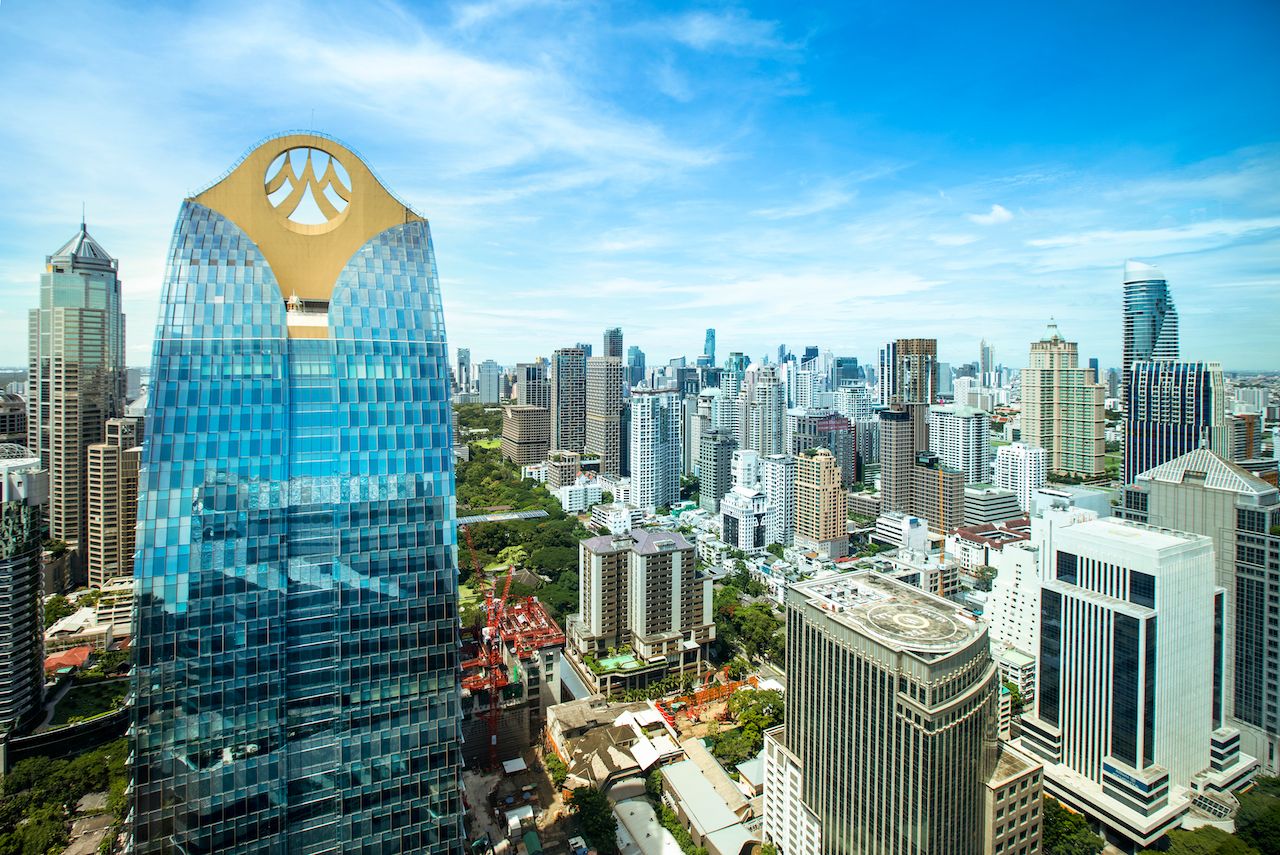
Photo: ittisak boonphardpai/Shutterstock
Sukhumvit — The section of Sukhumvit Road from Soi 1 to 35 is the most eclectic neighborhood in Bangkok. This densely populated area is home to high-end shopping malls, an abundance of Middle-Eastern and Indian restaurants, luxury hotels topped with swanky sky bars, and the red-light districts of Nana and Soi Cowboy. Sukhumvit is downtown Bangkok, the densest part of the city, and is always buzzing with energy.
Sukhumvit is full of shopping malls where you can buy everything from a Gucci handbag to a cheap secondhand phone. Even if shopping isn’t your thing, you may end up in an air-conditioned temple of commerce to escape the midday heat. Terminal 21, Central World, and Emporium are malls with modern movie theaters showing new releases in English and thousands of restaurants.
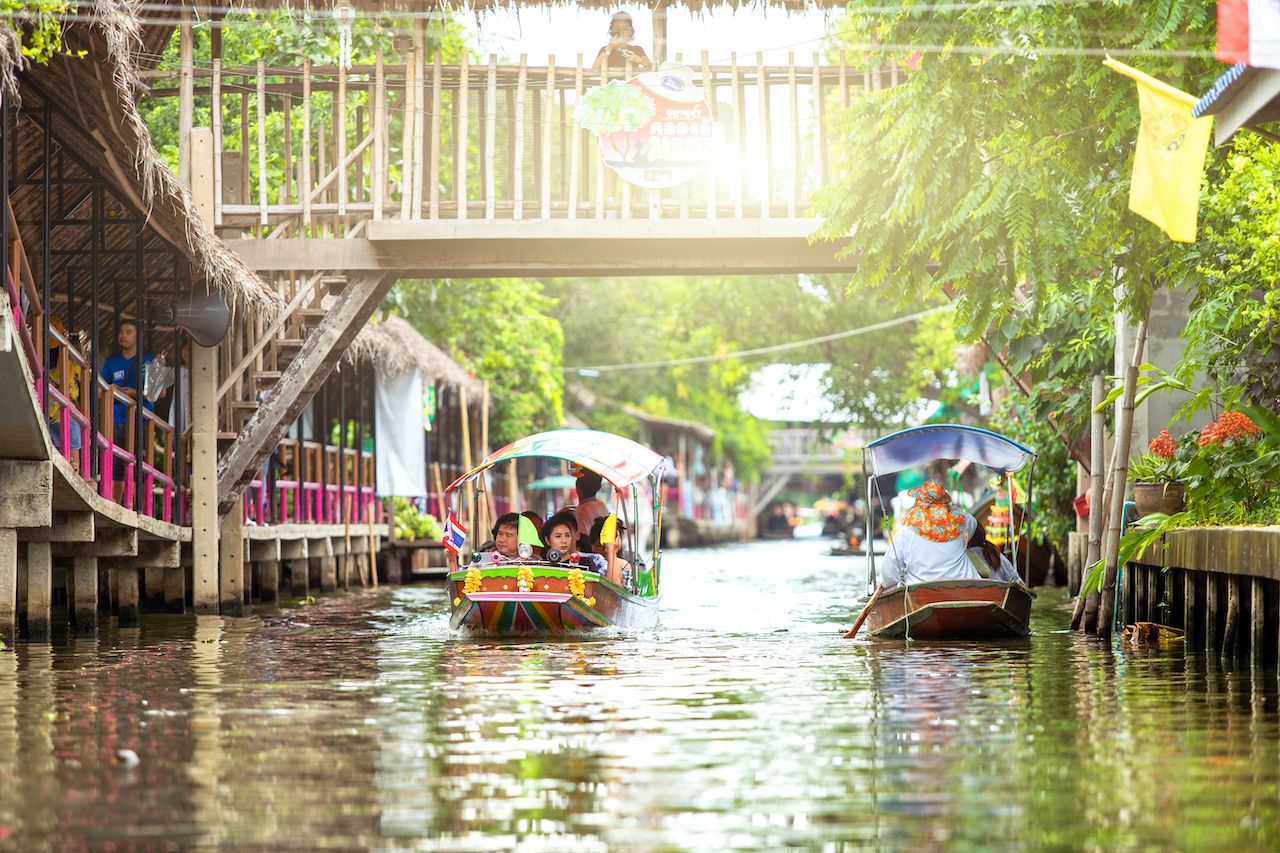
Photo: Photo APS/Shutterstock
Thonburi — Visiting Thonburi, a quiet district across the Chao Phraya River, is like stepping back in time 50 years and experiencing Bangkok before the population and construction boom. The most famous temple in Thonburi is the magnificent Wat Arun, but further west are temples, both ancient and modern, that are just as impressive yet devoid of tourists. Among the best is Wat Paknam Phasi Charoen, with its prayer room centered around a crystal stupa and vivid paintings on the ceiling.
The best way to explore Thonburi is on foot, walking along the canals and quiet streets between the floating markets, temples, and waterside neighborhoods. As you stroll through Thonburi, don’t be surprised if generous locals offer you a beer or coffee, or school kids ask you to join their soccer game. The residents of Thonburi are some of the friendliest people in Bangkok, and they’re proud of their neighborhood.
Recently opened metro lines connect Thonburi to the rest of the city, making it easy to access from downtown or as a base for travelers looking to stay in a more serene and local setting.

Photo: Richie Chan/Shutterstock
Silom — Stretching from the Chao Phraya River to Lumpini Park, Silom is a cosmopolitan district with a diverse range of sites and activities. Here you will find art museums, riverside dive bars, the Patpong red-light district, and the posh Lebua Sky Bar, made famous by the movie Hangover 2.
Silom abuts Lumpini Park, Bangkok’s best green space. At dusk and dawn, joggers run along the trails, and people practice yoga and Tai Chi in the squares. During the day, it is busy with families and tourists enjoying the outdoors and taking a break from the chaotic city.
For good grub, visit Lalai Sap Market on Silom Soi 5, a night market crammed with street-food stalls. Across the road is the Patpong Night Market, another open-air bazaar with clothing and souvenir shops.
For some art and culture, check out the rotating exhibitions of photography, art, music, and film at The River City Bangkok. Additionally, the Kathmandu Photo Gallery, located in a restored shophouse, displays a permanent exhibition by local artist Manit Sriwanichpoom and rotates shows by local and international photographers. Also, the Ilford Galerie and Nelson Hayes Library exhibit local photographers and artists throughout the year.

Photo: TONG4130/Shutterstock
Ari — The up-and-coming neighborhoods around the Ari BTS station make an excellent base from which to explore Bangkok. Ari is an alternative to Sukhumvit or Silom, with trendy restaurants, craft beer pubs, boutique hotels, and lots of street food — but at a lower price.
Ari is two train stops from the sprawling Chatuchak Weekend Market. With 15,000 stalls, it is one of the largest markets in the world and the perfect place to load up on souvenirs before heading home. The adjacent Queen Sirikit and Chatuchak parks provide a respite after a day of shopping or exploring the city.
Ari doesn’t have traditional tourist sites, and therein lies its charm. After a day of walking around Bangkok, returning to the neighborhood for a plate of street food with the locals or a craft beer with the expats is the ideal way to end the day.
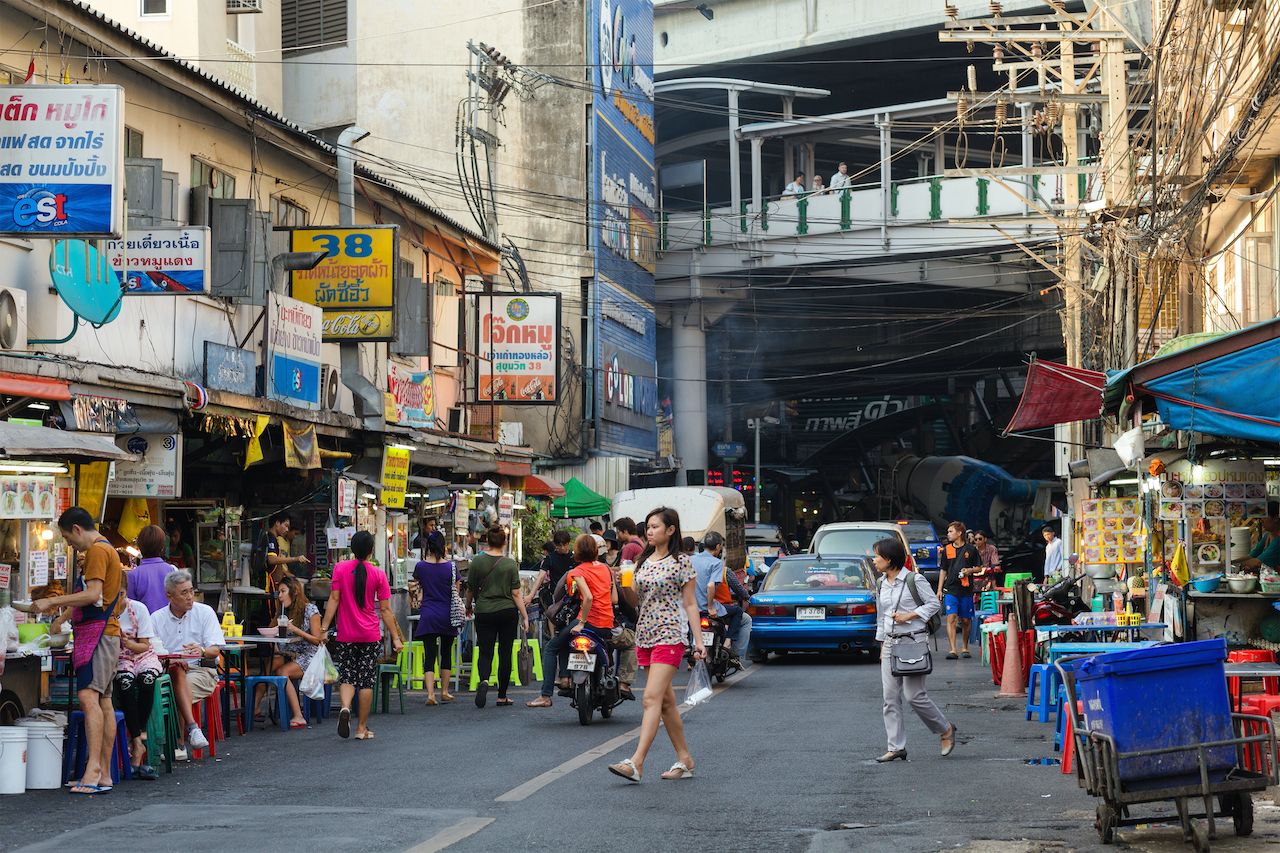
Photo: Stephane Bidouze/Shutterstock
Thong Lo — Centered around Sukhumvit 55, Thong Lo is a lively residential district with hip bars and a diverse array of international restaurants. Like Ari, Thong Lo makes a perfect base for travelers who want to enjoy low-key nightlife and unpretentious restaurants away from the tourist hordes.
The first stop in Thong Lo should be The Commons, a modern market with food stands, craft beer stalls, and coffee shops, centered around communal seating areas. Due to its sizable Japanese expat community, Thong Lo has some of the best sushi and izakayas in Bangkok. Try the AINU Bar for delicious Japanese food in a fun setting with live music.
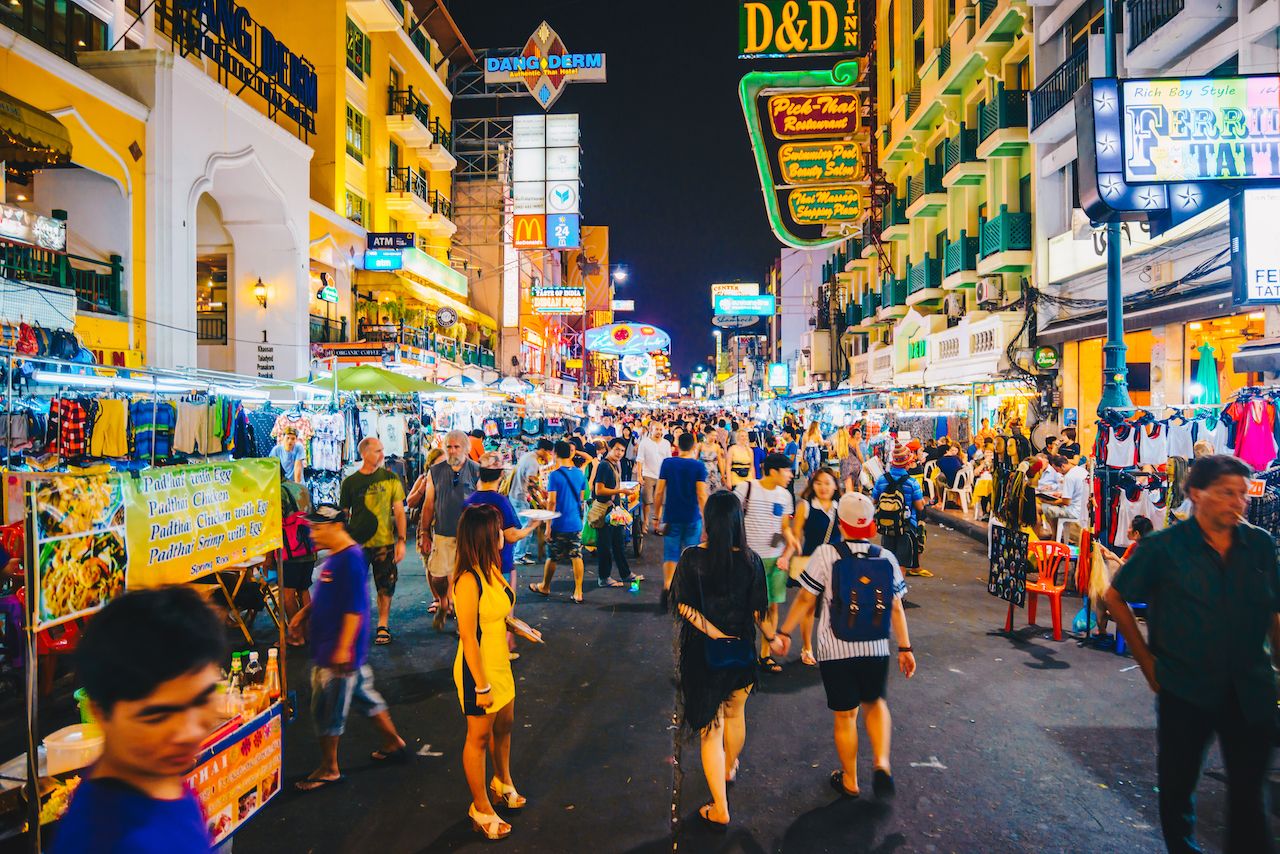
Photo: Makhh/Shutterstock
Khao San Road and environs — In his bestselling book, The Beach, Alex Garland described Khao San Road as the center of the backpacking universe. Despite some gentrification, the description is still apt 25 years later. Khao San Road is party central for Bangkok and perhaps the best place for people-watching anywhere in the world. Grab a drink at one of the streetside tables and watch the neverending parade of interesting people.
Khao San road is chockablock with bars; as the night goes on, the music gets louder, and the party spills into the street. Khao San transforms into a market by night where you can buy fried scorpions, a fake Harvard diploma, laughing gas, a tailored suit, elephant pants, bracelets with obscene sayings, heaping plates of pad Thai, and mango sticky rice. You can even get a foot massage or your hair braided.
Just off of Khao San Road are a network of quieter streets with open-air bars, live music, and food carts that offer a festive yet more peaceful alternative. Even if Khao San Road isn’t your cup of tea, walking the street is worth it to see the spectacle.
